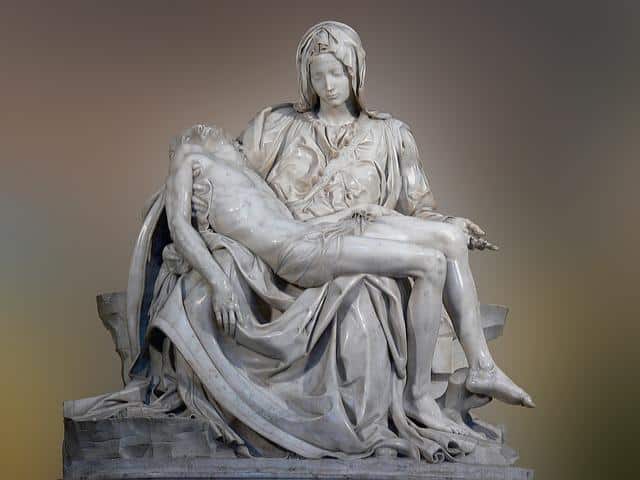
Piety is a virtue that arises from compassion and love for God.
Originating from the Latin word piĕtas , the concept of piety gives its name to the virtue that provokes devotion to everything that is related to holy matters and is guided by the love felt towards God . It is also about virtue that translates into actions driven by love for others and compassion for one's neighbor.
The notion, as can be seen, is associated with the ideas of religiosity and spirituality and is presented as something similar to humility . This virtue inspires a behavior of subordination to God and solidarity with the rest of the people without any type of distinction.
Piety, as we have determined it in its different meanings, we can establish that the usual way of representing it is with the form of a woman who in one of her hands carries the so-called horn of plenty, which is a symbol of prosperity, and In the other it has a kind of saucepan from which smoke comes out.
Different uses of the term piety
The deep and unconditional love devoted to parents and revered things is also known as piety. The term, on the other hand, is used as a synonym for words such as mercy, pity or commiseration .
This last use of the word is the most common and the one that dominates everyday language. When someone reflects pity for another subject, they decide to help them, assist them or forgive them. For example: “I know I was wrong, but please have mercy,” “There is no need to have mercy on murderers,” “The condemned man asked for mercy but it was too late: the executioner did not hesitate to comply with the order and did so.” executed.”
The term in cinema
In the cinematographic field, there are various films that have revolved around the aforementioned word that we are analyzing. This would be the case, for example, of “Twelve Men Without Pity.” In 1957, this film was released, directed by Sidney Lumet, which tells how a murder trial unfolds.
A jury is in charge of ruling on the guilt and innocence of the prisoner and practically completely agrees in considering the court guilty of the crime. However, one of the men who make up that group thinks the opposite, that he is innocent, and that is why he will raise doubts and assumptions to the rest of his companions with the clear objective of not putting him in prison unjustly.

The Vatican Pieta is a famous sculpture by Michelangelo.
The Pietà as an artistic representation
Known as Pietà , on the other hand, is the sculpture or painting that reflects the suffering of the Virgin Mary when she holds the body of Christ in her arms after being taken down from the cross. The most famous sculpture of this type is known as the Vatican Pieta and was created, around 1498 and 1499 , by the Italian sculptor and painter Michelangelo . It is located in St. Peter's Basilica and is considered one of the most outstanding artistic works of all time.
In 1972 , a person attacked the work with a hammer and destroyed the Virgin 's face. La Piedad had to be restored and, from then on, protected to prevent new attacks.
A financial concept
In addition to all of the above, we can refer to a term that is well known and frequently used among the population that uses the concept of piety.
Specifically, we are referring to the so-called monte de pieta , which is defined as a type of savings bank, with a certain charitable character at the same time, which is dedicated to granting a series of loans at very low interests.
